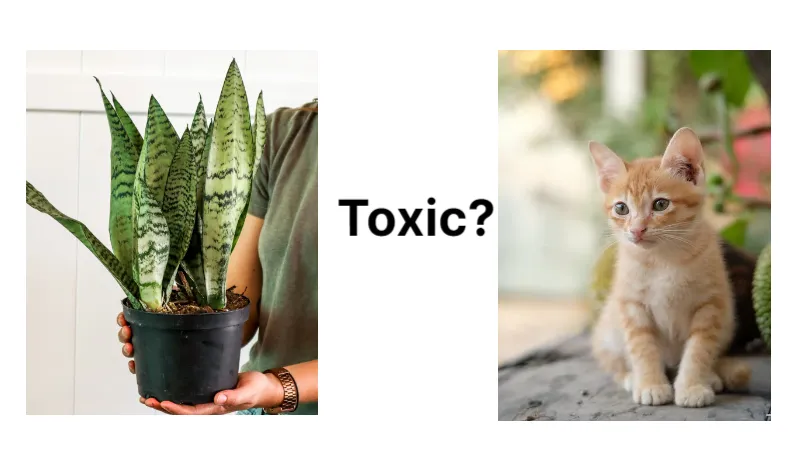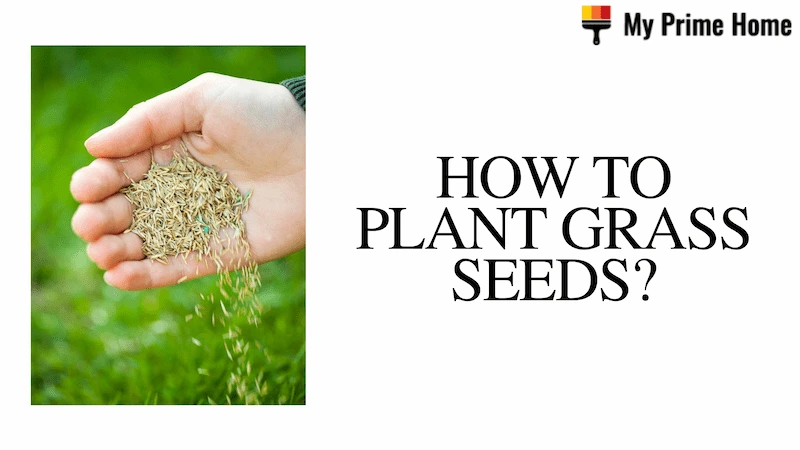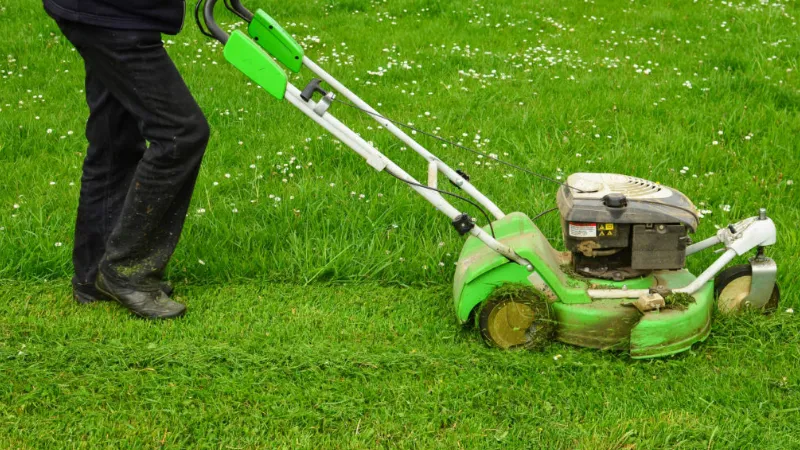Because they are hardy and simple to care for, snake plants are a very common type of indoor plant. However, have you ever wondered – are snake plants toxic to cats? Continue reading to discover more about snake plants and safety tips for your cat.
Unfortunately, snake plants are very toxic to cats because they contain mildly poisonous toxins. known as These plants defend themselves against harmful fungi, insects, microbes, and other animals like cats using a substance called saponin. Furthermore, according to the ASPCA, cats should avoid eating any snake plant parts.
For more information, keep reading.
What Happens If My Cat Ingests a Snake Plant?
If a cat takes a tiny bite, are snake plants poisonous to them? Yes, but the healthier they will be the less they consume. If your cat decides to eat a leaf from your snake plant, the first thing that will happen is that the plant will release its saponin toxin when the leaf breaks. Your cat will taste something extremely bitter as soon as it ingests some of this substance. Several symptoms could manifest if the cat continues to consume any of the leaves. Be on the lookout for:
- Vomiting
- Nausea
- Depression
- Diarrhea
- Drooling
- Abdominal pain or discomfort
- Loss of appetite
- Swollen mouth or throat
There is a higher chance that your cat will experience more severe symptoms if it already has a chronic illness or other medical condition. Hopefully the cat won’t try to eat any of the plant since the toxin will leave a harsh, bitter taste in its mouth as soon as it takes a bite. As a result, they might only consume a small portion of the plant (if any at all), and they’ll probably try to spit the rest out.
Thankfully, even a small amount of saponin consumption won’t kill your cat. Symptoms that do appear in your cat should only last a couple of days, if at all. Even so, you should get in touch with your vet and let them know what transpired.
In case your cat did consume too much of the toxin or if its symptoms are making it uncomfortable or painful, you might still want to take it to the vet just to be safe. If your cat consumed a larger chunk of the snake plant, you will be able to tell because the symptoms will probably be worse. Get your cat to the vet right away if you notice anything, such as swelling or itching.
To ascertain what needs to be done, your veterinarian will examine your cat. If required, prescriptions for other drugs and antihistamines for allergies may be issued. These medications will aid in calming your cat’s upset GI tract and stomach.
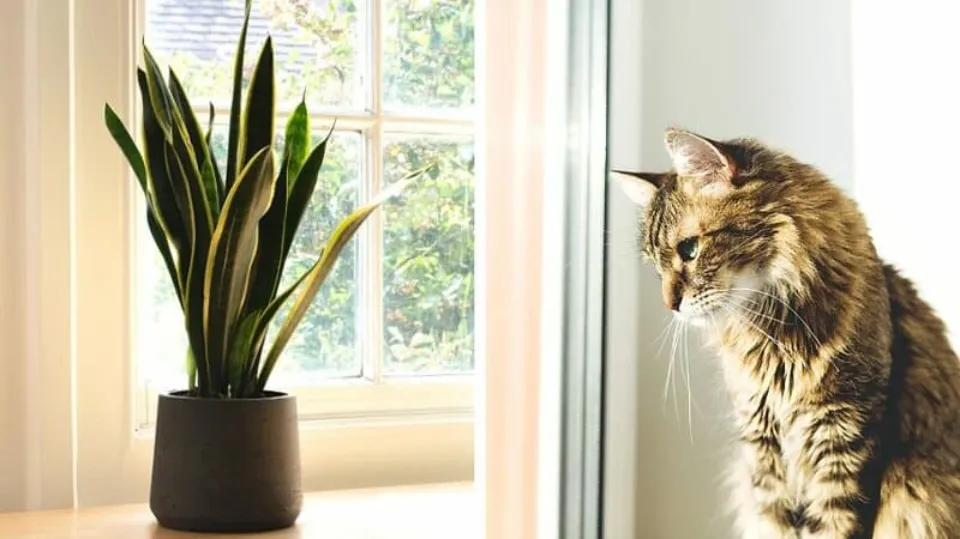
What to Do If Your Cat Eats a Snake Plant?
Contact your veterinarian immediately if you know that your cat bit or ate any snake plant or if they are showing any of the symptoms. A pet poison hotline can be contacted as well.
Give your vet as much information as you can, including the plant that was consumed and your cat’s medical background. Additionally, you should note when your cat last ate the plant and, if you know, how much he consumed.
Since cats generally won’t consume much of the plant due to its taste, snake plant poisoning rarely results in death. If your cat does manage to get a bite of a snake plant, you should still call your veterinarian. They can aid in the treatment of emerging symptoms, such as diarrhea and vomiting, to help your cat feel better.
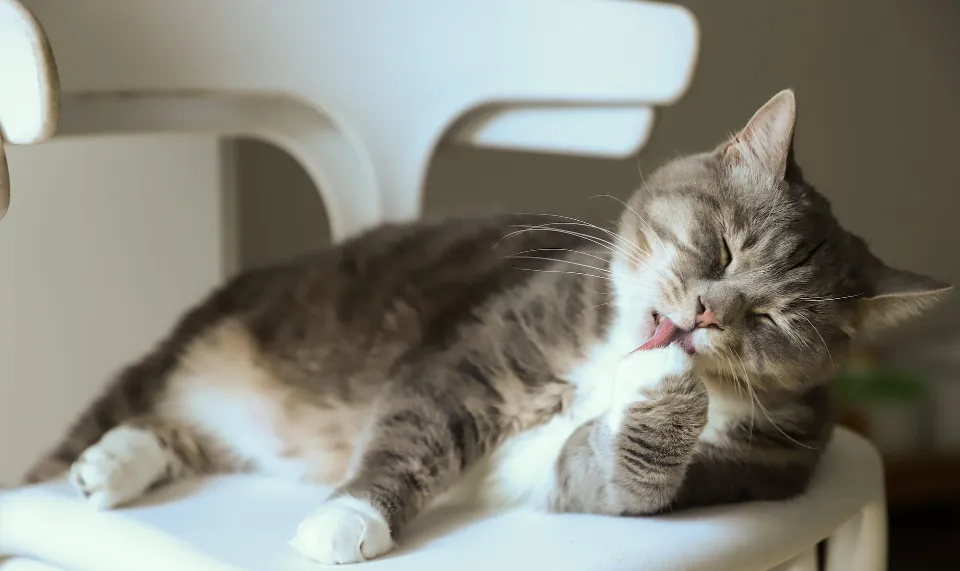
Ways to Stop Cats from Eating Snake Plants
To prevent your cats from playing with or eating a snake plant, you can try a few different techniques.
You can give these a shot, but remember that there is no way to ensure your cat won’t eat a poisonous plant. Therefore, it’s best to remove these types of plants from your home if your cat consistently tries to eat them.
Relocate the Plant
Keep the plant as far away from your cat’s eating area, furniture, and litter boxes as you can.
One of the safest locations for the plant is a space with a door you can close, allowing you to leave your cats unattended without worrying about the plant. Thankfully, snake plants don’t need a lot of sunlight to thrive, so they can be kept in spaces with less natural light. How much sun do aloe vera plants need?
Place the Plant on a Stand
To make it more difficult for your cat to get to the plant, try positioning it on a shelf or a plant stand. Finding a plant stand that blends in with your other furniture shouldn’t be too difficult because there are so many different plant stand designs to choose from.
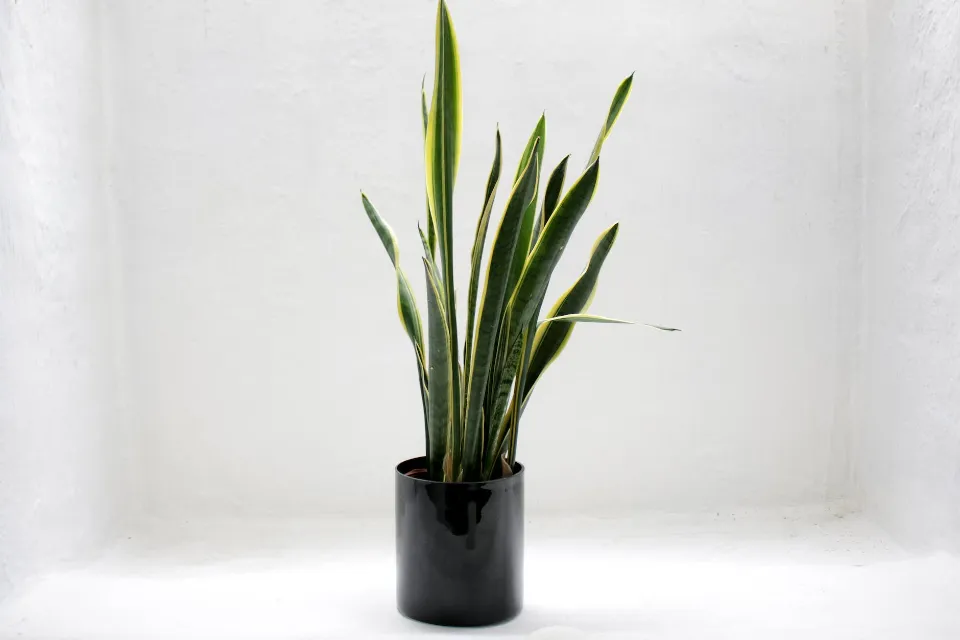
Make the Plant Smell Bad
By surrounding the snake plant with smells that cats typically find repulsive, you can try to deter your cat from the snake plant. You can use the juice or zest of lemons, limes, or oranges to deter cats from approaching the plant because most cats don’t like the scent of citrus fruits.
Both cinnamon and cayenne pepper are unappealing to cats, so you might try sprinkling one or the other of them in the ground.
Spray Plant Leaves With Pet Spray
There are several plant sprays in the market that work to discourage pets from chewing on certain items. Apple or citrus bitterness is the most common flavor. Just remember that cats have different tastes, so some sprays they may tolerate while disliking others. Therefore, it might take a few attempts before you find a spray that effectively deters your cat.
Additionally, you’ll need to locate a spray that won’t harm the leaves of your plant. To begin, spray just one area of the plant to see if it damages it. Spray the plant’s leaves as frequently as the manufacturer suggests once you’ve found a spray that works.
You can also spray the leaves with a mixture of one part vinegar and three parts water.
Cat Grass
Try directing your cat to cat grass if it simply likes to chew on leaves. It’s not too difficult to maintain and grow cat grass. It can be a healthy treat for your cats because it also has nutrients and fiber.
Common Houseplants That Are Most Toxic to Cats
Cats have a penchant for mischief and have been known to chew on plants, among other things. You should avoid bringing poisonous plants into your space if you love your cats and don’t want to go through the trouble of trying to keep them away from your houseplants. Below are some of the houseplants that are most toxic to cats:
Sago Palms
Despite having the word “palm” attached to its name, sago palms are not related to the palm family but it’s a gymnosperm closely related to the pine trees. Sago palms are among the most popular indoor plants that are poisonous to cats. Due to their attractive qualities and landscaping capabilities, they are very prevalent in homes.
If your cat eats sago palms, it might experience jaundice, vomiting, and blood stools, among other symptoms. And within 15 minutes to 3 hours or more after consumption, these symptoms will become very obvious. Ensure you immediately give your cat the necessary treatment because the survival rate after eating these plants is above 50%.
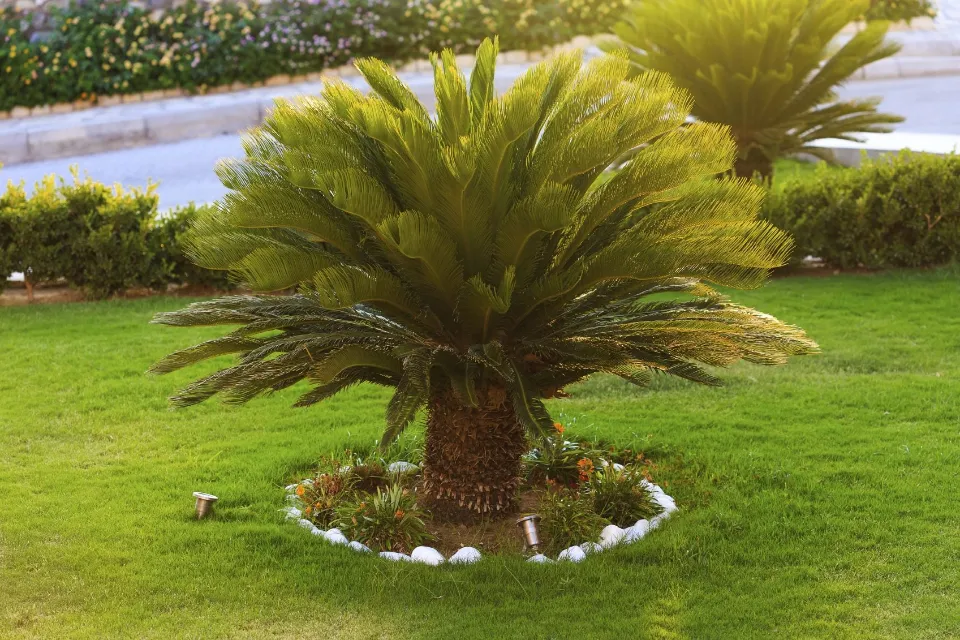
Asparagus Fern
The asparagus fern, also known as asparagus grass or lace fern and extremely toxic to cats, is another common houseplant. The asparagus fern is not a true fern, despite the fact that its name implies a connection to one. However, the fern’s leaves can be seen on the asparagus fern.
They are typically grown at home because of the attractive floral arrangements. Low appetite, vomiting, diarrhea, abdominal pain, and allergic dermatitis are just a few of the common symptoms your cat might experience if it consumes the asparagus fern.
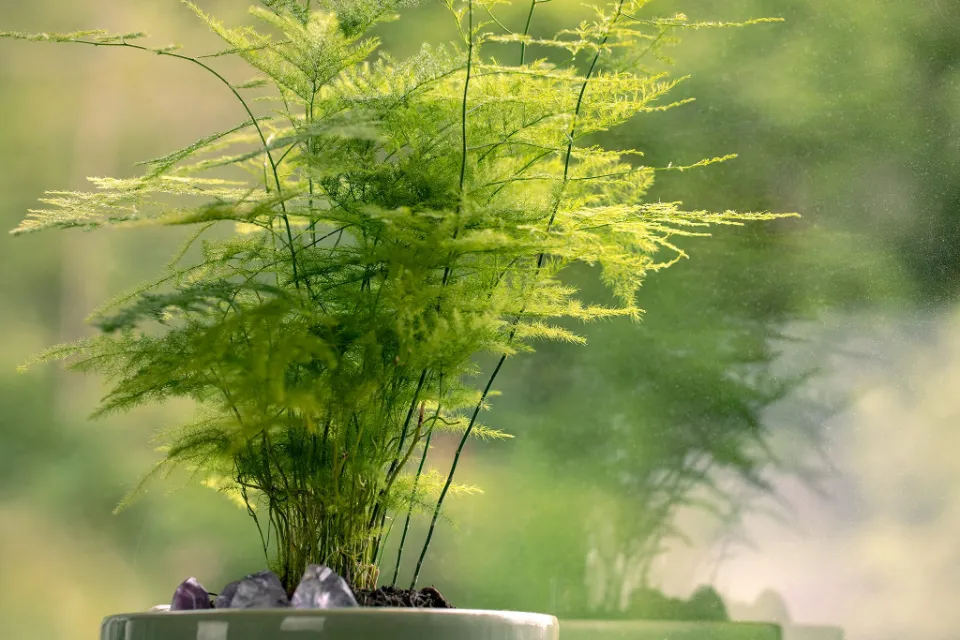
Aloe Vera
Despite the fact that aloe vera is well known for its many health advantages for people, including the treatment of canker sores, a reduction in constipation, a reduction in blood sugar levels, etc., and as a result, grown as houseplants, it still poses great dangers to cats because it contains the same poisonous toxin that is present in snake plants; Saponin.
Vomiting, diarrhea, nausea, and other symptoms are some of the ones your cat might experience after consuming aloe vera. Make sure your cat doesn’t get close to this dangerous plant. Read about: How to Care for Aloe Plants?
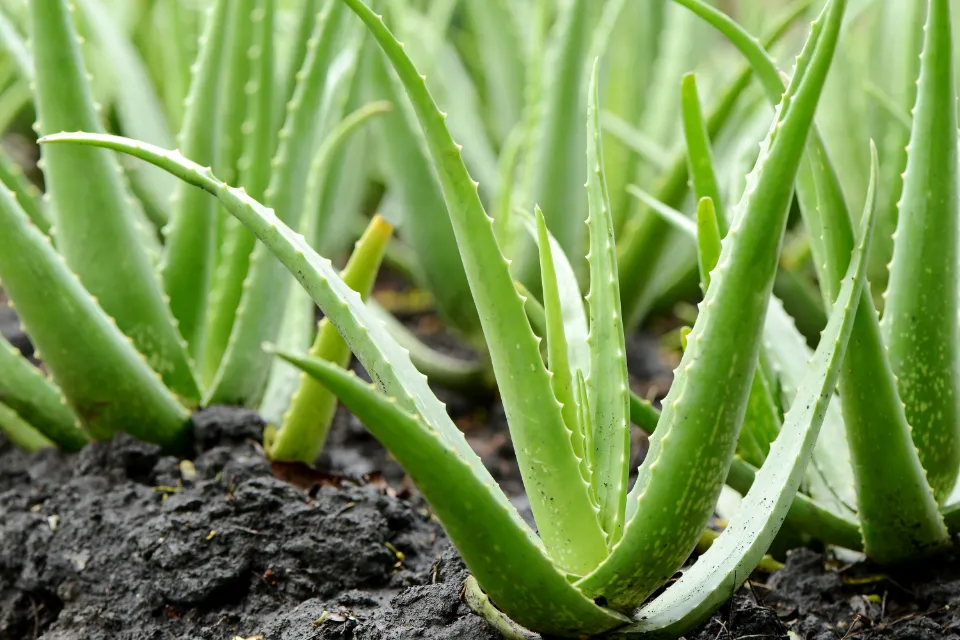
Cyclamen
Cats are extremely poisoned by the common houseplant cyclamen. Their roots and stems are used in medicine, and they are frequently used for aesthetic purposes. They also have some health benefits.
It contains saponin, the same lethal toxin found in aloe vera and snake plants. Your cat might show signs such as vomiting, drooling, diarrhea, etc. after consuming the cyclamen plant.
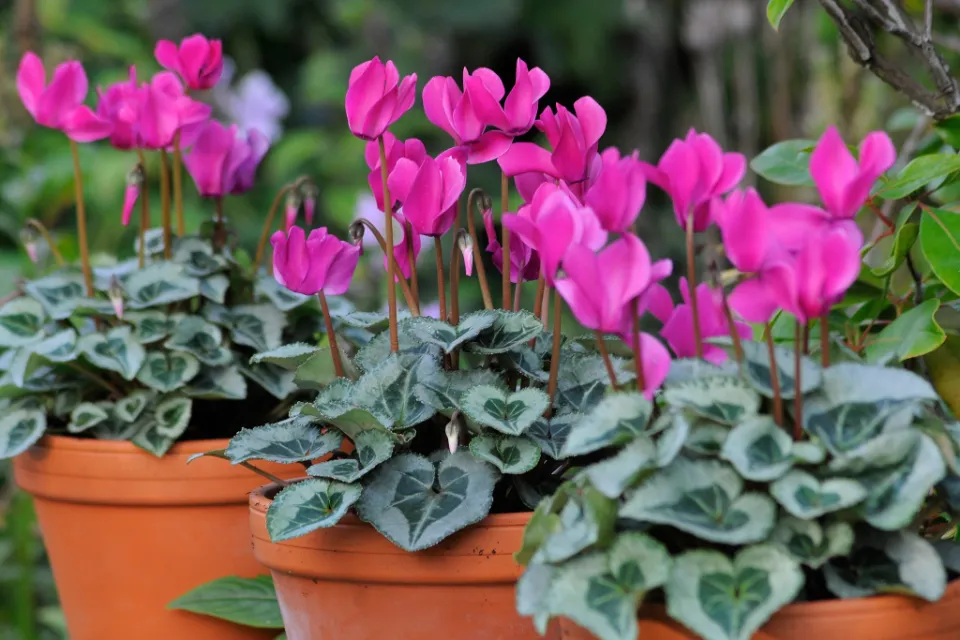
Amaryllis
Another indoor plant that is extremely toxic to cats is the amaryllis, which belongs to the Liliaceae family but differs from “true lilies” in that it contains a toxin. A phenanthridine alkaloid, which may cause breathing difficulties and vomiting upon consumption, is present in almost all parts of a typical Amaryllis plant.
As was already mentioned, the majority of its parts contain this toxic poison. The bulb of a typical Amaryllis is always very visible and contains raphide oxalate crystals, which are extremely poisonous to cats and cause excessive drooling, vomiting, breathing difficulties, and oral pains.
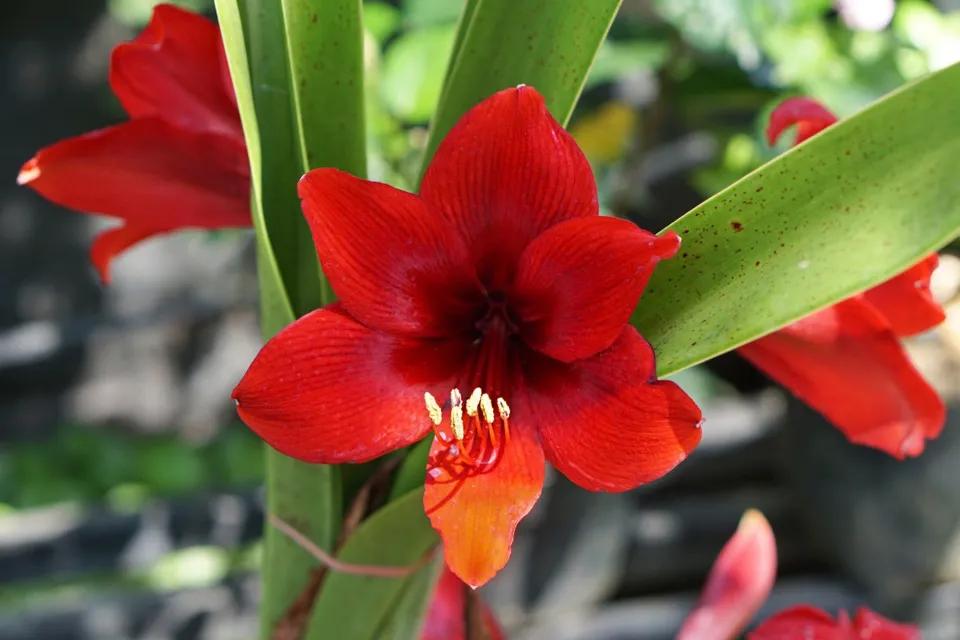
Sweetheart Ivy
Cats are particularly poisoned by sweetheart ivy as a houseplant. The names glacier ivy and needlepoint ivy are other names for it. It contains triterpenoid saponins, a toxic substance that causes symptoms like esophageal and stomach irritation, breathing problems, dermatitis, excessive drooling, etc. Make every effort to keep your cat away from this poisonous plant.
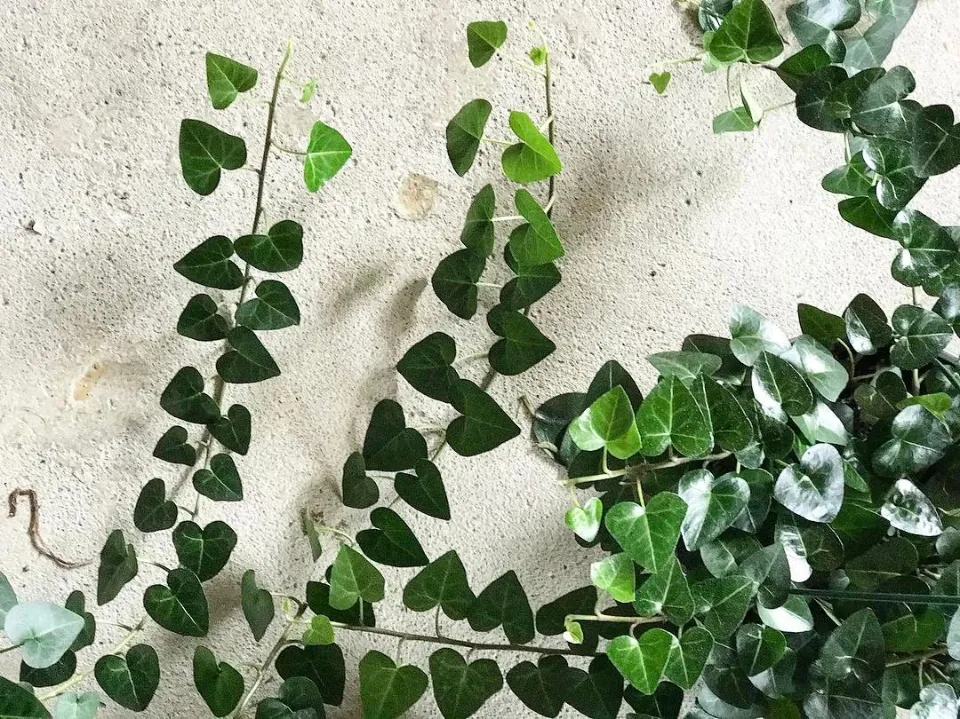
Dieffenbachia
Another plant that is typically found in many homes is Dieffenbachia, also known as the leopard lily or the dumb cane plant. It is a houseplant that is known to thrive well indoors.
The plant has calcium oxalates, which are extremely toxic to cats and one of the main causes of kidney stones in people. After eating this plant, your cat might show signs like swelling of the tongue, lips, and face, an ulcer, mouth blisters, excessive drooling, loss of appetite, difficulty breathing, etc.
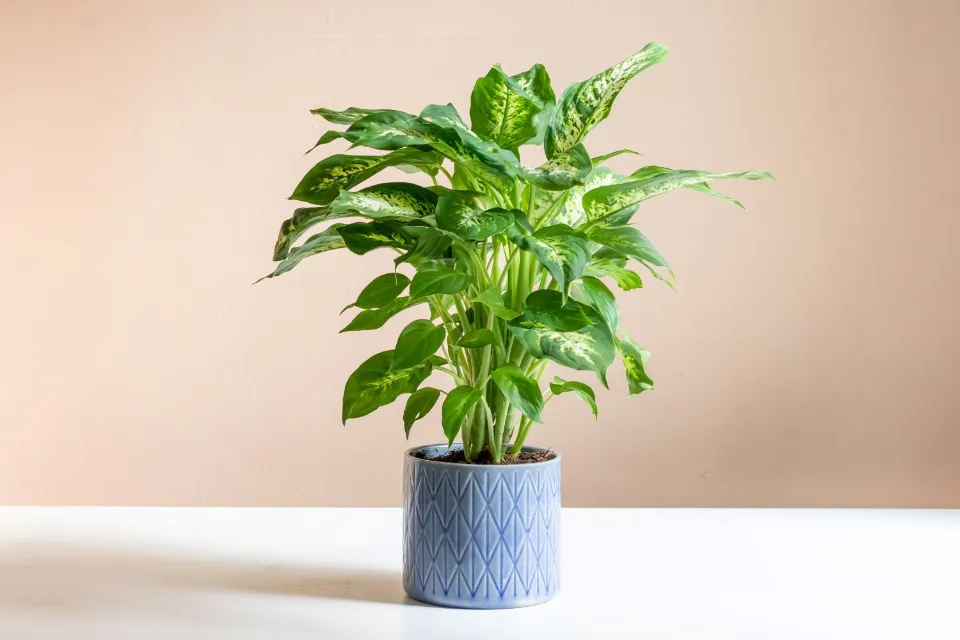
Ceriman
Another indoor plant that is extremely dangerous to cats is the ceriman. It is also referred to as the Swiss cheese plant or the hurricane plant. It is one of those well-known indoor plants that is grown for its eye-catching appearance.
Swollen tongues, faces, and lips, frequent vomiting, excessive drooling, and other signs may appear if your cat eats ceriman plant.
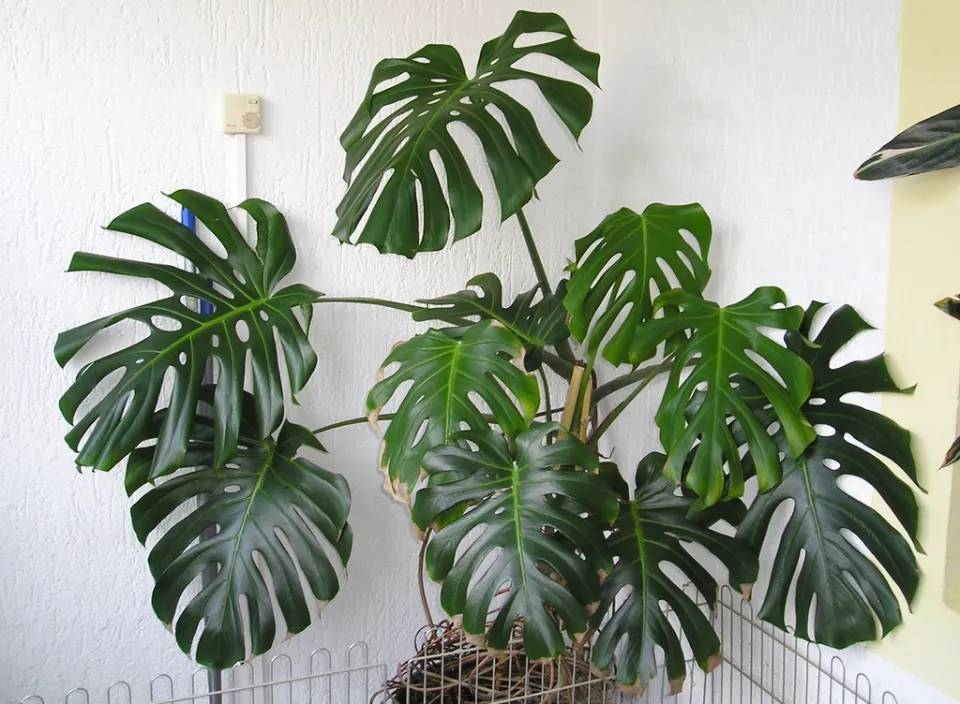
Dracaena
Another common houseplant that is very dangerous to cats is dracaena, also referred to as the corn plant. The same lethal toxin that is present in aloe vera and snake plants, saponin, is also present in it.
Loss of appetite, excessive drooling, bloody vomiting, mental dullness, etc. are some signs that cats who have eaten this plant are experiencing.
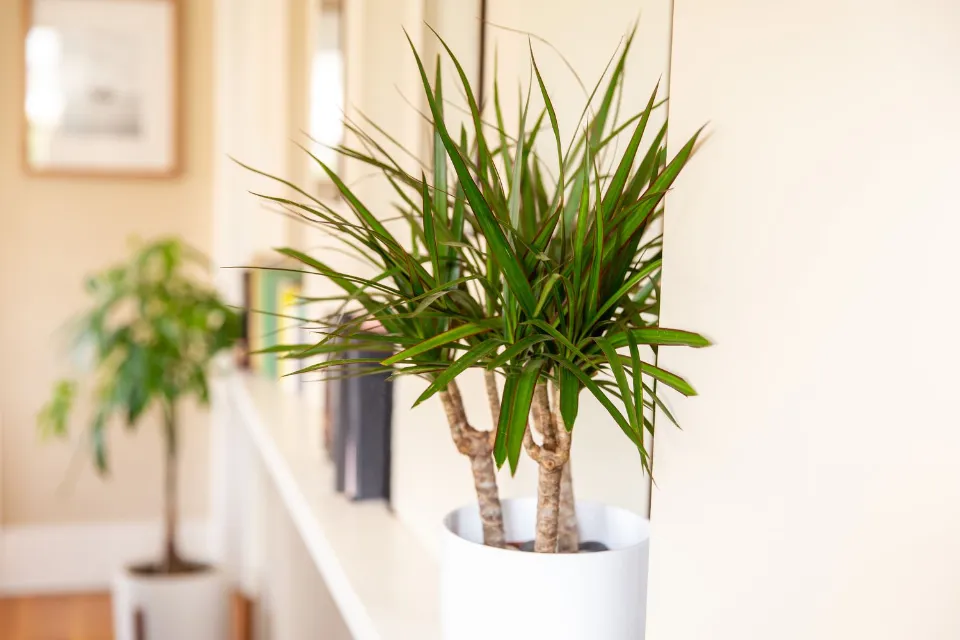
Common Houseplants That Are Safe for Cats
While some houseplants are extremely toxic and risky for your cat’s physical and mental health, others are safe for your cat even if they ingest them. Some of these safe houseplants include;
- African violets
- Baby tears
- Banana trees
- Spider plants
- Venus fly traps
- Areca palms
- Boston ferns
- Calathea
- Friendship plants
- Peperomias
- Parlor palms
- Orchids
- Mosaic or nerve plants
- Bromeliads
- Ponytail palms
- Polka dot plants
- Purple waffle plants
- Royal velvet plants or purple passion
- Haworthia
- Echeveria succulents
- Money trees
Therefore, don’t worry if your cat nibbles on a snake plant. He might just experience some short-term stomach discomfort, but he’ll probably be completely fine.
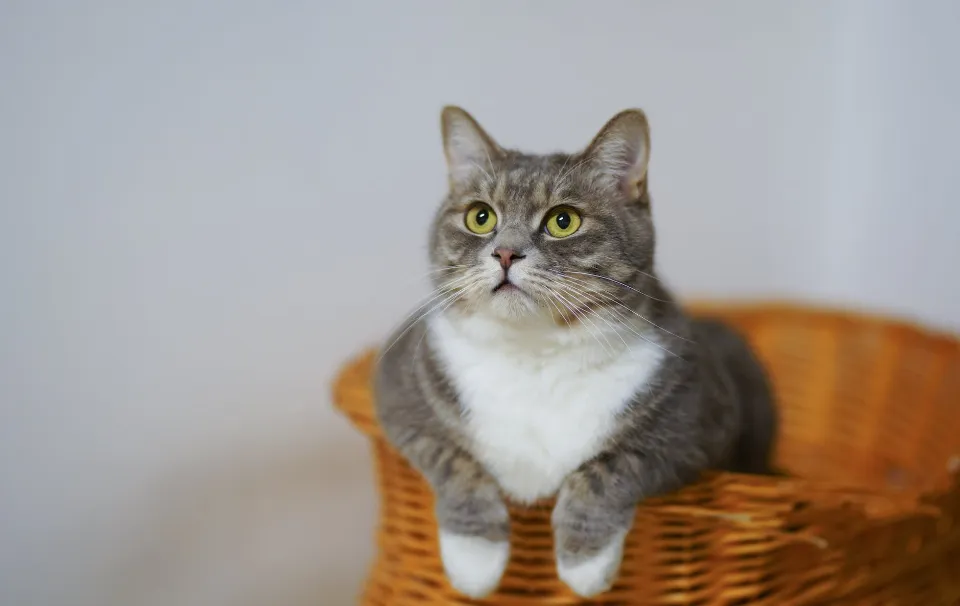
FAQs
Is Snake Plant Pet Friendly?
Because of its striking appearance and the fact that it’s very easy to care for, snake plants are incredibly popular indoor plants. Unfortunately, they are also poisonous plants for dogs and can cause nausea, vomiting and diarrhea if consumed, says the ASPCA.
Do Cats Like to Chew on Snake Plants?
Cats with a stronger sense of curiosity or kittens may be more likely to try the snake plant. Most animals do not return for a second bite, as the plant is bitter in taste and results in an immediate burning sensation to the mouth.
What Happens If a Cat Licks a Snake Plant?
To be on the safe side, you should be aware of the signs of cat poisoning by snake plants. They contain the compound saponin, which can cause vomiting, diarrhea, lethargy, abdominal pain, drooling, swelling in the mouth and a decreased appetite.
Is It OK to Sleep With Snake Plant?
On the other hand, during the night, these plants engage in a process known as respiration in which they absorb oxygen and exhale carbon dioxide. However, the Snake Plant is one of the lucky few that continues to produce oxygen at night, making it the ideal plant to place in your bedroom for better sleep.
Summary: Are Snake Plants Toxic to Cats?
Some plants simply don’t thrive in homes with cats, especially if the cats are especially inquisitive. You can use a variety of techniques to prevent cats from inadvertently ingesting houseplants if you already have any that are poisonous to cats.
Please call your veterinarian right away if you have any reason to believe that your cat may have consumed a poisonous plant. Always err on the side of caution.
Buying plants that are safe for cats to consume is the best and safest way to keep plants in your home. Thankfully, there are a ton of entertaining and unique houseplants available that cats can safely enjoy.
Therefore, don’t be reluctant to exercise your creativity. In no time at all, your house will be a happy and peaceful haven, full of lovely plants and cats.
If you have any questions, please leave a comment. My Prime Home tries to give you the best home improvement information. Don’t forget to share the post. Thank you for reading.
